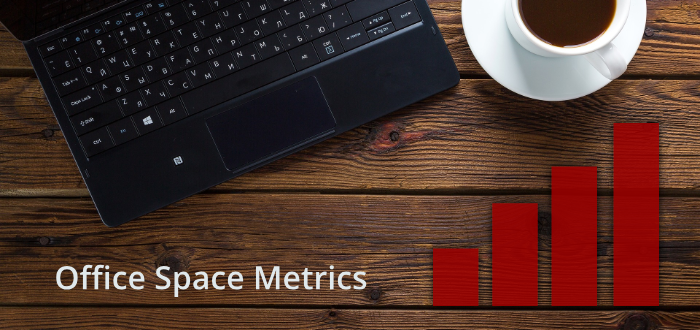The Raub Report- Changes in Office Space Metrics
May 25, 2018

When I first entered the commercial real estate business there were many metrics I needed to learn; for example, how many square feet are in an acre (43,560). One of the metrics I learned is that the average space used by an office worker was about 250 square feet. This takes into account not only the actual desk space, but also the common walkways, meeting rooms, break rooms, lobby, etc. So, a small 1,000 square foot office would accommodate 4 people, supposedly. Now, cut to today, the second decade of the 21st Century and that metric has changed a bit – we are now down to 150 square feet in traditional offices, with modular work areas and bull-pens. Then, comes along the co-working space — hip, cool, very millennial vibe — at a mere 75 feet per worker! Workers are crammed in so close together with their laptops, they wear earbuds to cut out the distractions and noise. The new thing is to provide actual phone booths in the office, so that a worker can go into the phone booth with his/her cell phone and have a conversation that doesn’t sound like he/she is in La Villita at Fiesta! This now defines “cool.” Wow.
There have been executive suite companies around for years, like Global HQ and Regus. But now comes WeWork which has taken this concept to a whole new level, creating ultra-hip decors and a whole culture, just as Starbucks did for the once lowly coffee shop. WeWork is even managing whole floors and buildings for companies, like one of IBM’s buildings in Manhattan. And, you can “join the club” and go to any WeWork office space to do your work or hang-out, making it a regional office for any company no matter how large or how small. New York City has 50, with the largest at 220,000 square feet! Downtown San Francisco 12, Seattle 8, Austin 5 and San Antonio 0.
There is a downside to this ultra-dense office space, for the Landlord and the other tenants, too. The much higher number of people in office buildings puts a lot more strain on the elevators, air-conditioning systems, carpets, doors, rest rooms, janitors and security. Don’t even talk about parking! The City of San Antonio has a minimum requirement of 3 parking spaces per 1000 square feet but most buildings need 5 parking spaces per 1000 square feet, that is, one space per 200 square feet. But when there could be over 10 workers per 1000 square feet, it creates a major parking problem, even if half ride bicycles to work. All of this density is driven not only by convenience but also by economics. Rent rates are getting higher as construction costs sky rocket for new office buildings, $400 per square foot and more for a ‘high rise.’
Another new factor is the growth of the Gig Economy, in which many new workers have “gigs” as independent contractors, free lancers and entrepreneurs rather than become employees. They prefer to work specific tasks and projects, gigs, rather than tie themselves to a 9-to-5 job working for “the man.” They cannot afford a nice big permanent office space to rent, but would rather be able to float around, working when and where they want. This does promote the formation of new, small businesses, the heart of job growth and creativity in America, so I think this may be a good thing, generally speaking. However, for Landlords and investors, co-working spaces will likely have a mildly negative impact on office building economics.
But, then I also read that private offices are making a come-back. It is now the promotion perk, along with more time off — time away from these densely packed offices, perhaps?

